
| Note: Click a picture or illustration in the left column to view a large version in the article. To hide the large version, simply click on it. |
|
||
New Reconfiguration Process |
In the past, when it was necessary to change the configuration of a vehicle (axle ratio, for instance), you had to call the Techline Customer Support Center (TCSC) and obtain a Vehicle Configuration Index (VCI) number. Then you would use the VCI number to access the download that corresponded to the required change. TCSC also updated the vehicle’s “as built” database to reflect the new change. | |
|
||
Vehicle Data Recorder Software Update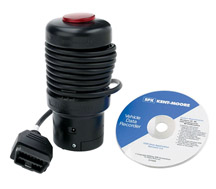 figure 5 |
A new essential tool software update CD 14.0 is being shipped for the J-42598 Vehicle Data Recorder (VDR) (fig. 5). Revision 14.0 adds Chassis support for 2006 vehicles and Powertrain/Chassis for 2007 full-size utilities. - Thanks to Mike Banar |
|
|
||
Owner Manual and Warranty Information on SI
|
TIP: The owner manual and warranty information that resides in the Service Information Database and distributed electronically on SI and on DVD is updated only during the current model year. Once the final version is printed, the service information database is not updated for previous model years. - Thanks to Krys Clever and Yvonne Carpenter |
|
|
||
An article in the June issue of TechLink introduced two extensive and useful reference files on these topics. They are located in the Reference Guide section of the TechLink website. To find them, look at the top of any month’s home page (any language). Locate the Reference Guide tab and click. Then scroll down to locate the desired file. |
||
|
||
| When replacing the Electronic Brake Control Module (EBCM) or Vehicle Stability Enhancement System (VSES) module an a 2006 Saab 9-7x, tire size programming is required. When programming the tire size, note that tire size P255/55R18 is not listed in the Tech 2 list. This tire selection in the EBCM/VSES is designed for EBCM/VSES operation and does not affect odometer or speedometer operation on the Instrument Panel Cluster. When replacing and programming the EBCM/VSES on a vehicle equipped with P255/55R18 tires, select tire size P255/60R17 from the Tech 2 list. The Tech 2 path for this programming is listed below. Tech 2 Path: > Select Model Year > LD Truck > Saab > Chassis > ABS-TCS-VSES > Special Functions > Tire Size Calibration > New Tire Size Select tire size P255/60R17 when tire size P255/55R18 is not offered. - Thanks to Dino Poulos, TAC |
||
|
||
Aisin Transmission Lubricants and Sealants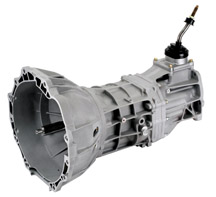 figure 6 |
This information applies to repair of the manual transmission (fig. 6) on the Chevrolet Colorado, GMC Canyon, Saturn SKY, Pontiac Solstice, and Hummer H3.
Manual transmission fluid requirements for the various units presently in service change from model to model.
Manual transmission fluid requirements for the various units presently in service change from model to model. Using the incorrect type of transmission fluid in Aisin manual transmissions may affect the sealing ability of the seals. An incorrect type of sealer may not be compatible with the transmission fluid or may not have the correct characteristics for sealing the affected components. TIP: Refer to SI documentation for correct sealers, adhesives, lubricants and fill quantity for each transmission you service. Aisin manual transmissions require the use of p/n 89021806 - Fluid, m/trns 75W-90 GL-3, 1QT (89021807, 1L, in Canada). The use of the correct fluid is required to assure the desired shift characteristics and compatibility with adhesive sealers. RTV is the only sealer that is compatible with this fluid. The use of anaerobic sealers on Aisin manual transmissions is not recommended. - Thanks to Pat Connell |
|
|
||
Manual Transmission Lubricant
|
This information applies to 2007 and prior GM passenger cars and trucks. Dexron III is being phased out as a product name. It is being renamed Manual Transmission Fluid and carries p/n 88861800 U.S. (88861801 Canada). If fluid p/n 88861800 U.S. (88861801 Canada) is not yet available when servicing a manual transmission or transfer case, Dexron III can be used in its place. DO NOT use Dexron VI in place of manual transmission fluid in any manual transmissions or transfer cases that specify Dexron III, as a failure may result. - Thanks to Charles Krepp, TAC |
|
|
|||||||||||||||||||||||||||||||||||||||||||||||||
A new line of interior cleaners is now available from GMSPO (US) (fig. 7) and ACDelco (Canada) (fig. 8). These products were developed specifically for cleaning low gloss and light color interiors such as those used in the 2006-07 GM cars and trucks. TIP: Cadillac DTS with RPO R9N Tehama leather is excluded.
This cleaner is specifically formulated for leather, vinyl and plastic. It is safe to use on both low gloss and high gloss finishes. It is formulated with natural citrus degreasers to remove ink, tar, grease, crayons and markers from leathers, vinyls and plastics.
This conditioner is specially formulated for leather and vinyls to replenish oils after cleaning. It is safe to use on low gloss leathers and vinyls.
This professional strength cleaner is ready to use to remove stains from upholstery fabrics caused by food, beverages, protein, chocolate, tea, grass, wine, mildew, mustard, ketchup, latex paint, vomit, vegetable oil, mayonnaise, salad dressing, blood, and urine.
This professional strength cleaner is ready to use to remove stains from upholstery fabrics caused by grease, ink, butter, iodine, mustard, mayonnaise, oil, cosmetics, lipstick, tar, gum, crayon, shoe polish, urine, markers and red stains. |
|||||||||||||||||||||||||||||||||||||||||||||||||
|
||
Cylinder Head Removal 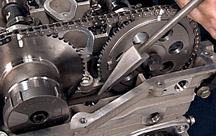 figure 9  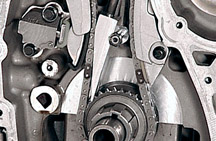 figure 10 |
This information applies to the dual overhead cam engine family used in Colorado/Canyon pickups and Hummer H3. These engines are the four cylinder 2.8 L (LK5) and five cylinder 3.5 L (L52). TIP: GM Powertrain is developing a revised procedure to use this tool on the LL8 4.2L 6 cylinder engine, and bulletin 06-06-01-017 will be updated to reflect this new procedure when it becomes available. Until now, cylinder head removal required removing the timing chain, which in turn required removing the drive belt tensioner, front engine cover, water pump, crankshaft balancer, power steering pump, oil pump and engine oil pan. A new lower timing chain tensioner holding tool EN-48468 has been released to simplify this job (fig. 9). Using this tool permits cylinder head removal without having to remove any of the items listed earlier. A side benefit is minimizing customer comebacks due to oil leaks that could result from the removal and installation of these components. Refer to bulletin 06-06-01-017 for the completely revised cylinder head removal and installation procedure. How the New Tool Works With the piston of cylinder number 1 at top dead center of the compression stroke, the flats of both camshafts face upward and the word Delphi on the exhaust camshaft positioner is parallel to the cylinder head surface. To ensure that everything can be put back into proper timing during reassembly, this is the position everything must be in before the head is removed. To ensure that the crankshaft does not move during the procedure, the flywheel is locked in place using EN-46547. Then, the new tool EN-48468 is used to ensure that the timing chain remains in place on the crankshaft gear. EN-48468 is wedged between the timing chain and the front cover center bolt, by very lightly tapping on it with a plastic or brass hammer. The narrow ramp of the tool wedge faces the chain, and the wide ramp faces the bolt (fig. 10). TIP: Avoid excessive force when wedging the tool into place, to prevent damaging the chain tensioner or front cover bolt. TIP: The tool handle can be unscrewed after the tool is wedged into place. Refer to the bulletin procedure for removing the camshaft drive sprockets and cylinder head. - Thanks to Keith Newbury and Andrew Zink |
|
|
||
Creak in Wheel Well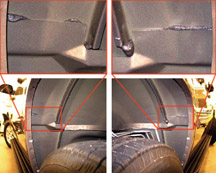 figure 11 |
Owners of some 2007 full-size utilities may comment on a creak or squeaking noise coming from the left or right rear wheel well area. This may be caused by insufficent sealer in the body seams in the front portion of the rear wheel wells (fig. 11).
Void (left) If you experience this concern, locate and repair the void in the sealer. |
|
|
||
CHECK OIL LEVEL Message |
This information applies to 1999-2007 Chevrolet Silverado Classic and GMC Sierra Classic, 2002-06 Cadillac Escalade, Chevrolet Avalanche, Suburban, Tahoe, and GMC Yukon and Yukon Denali. |
|
|
||
When lifting the Saturn SKY, it is very important to place the lifting pads in the correct position (fig. 12) under the vehicle to avoid damage (fig. 13). TIP: The correct procedures for the 2007 Saturn SKY are explained in Lifting and Jacking the Vehicle in SI. |
||
|
||
Creak or Squeak Noise
|
This information applies to 2005-06 full size utilities, Cadillac Escalade, Chevrolet Avalanche, and HUMMER H2 built after May, 2005. |
|
|
||
Transmission Pump |
This information applies to 2005-07 cars and trucks equipped with 4L60E or 4L65E (RPO M30 or M32) automatic transmission with an automatic transmission fluid leak from the pump or bell housing area. Investigation has determined that fluid leaks in this area could be caused by several issues. Some leaks are more severe than others. A small leak is described as just a few drops of fluid or dampness in the suspected area. A vehicle could be driven a reasonable distance without causing a significant loss of fluid. A large leak will usually be dripping while being observed. If the vehicle is driven a short distance, a fluid loss would cause the level to drop below the minimum. Use oil dye in the transmission to verify that the leak is coming from the pump area. Clean the suspected area of all residual oil and drive the vehicle to see if the dye begins to appear. TIP: If a vehicle with very low mileage displays symptoms of a small leak, it may have assembly oil in the bell housing which is not truly a leak. Once the dye starts to appear, disassemble and inspect for the root cause. Some 2006 transmissions may have small cuts in the torque converter hub-to-pump seal (243). These cuts may be caused by small burrs on the torque converter hub pump drive slots. These burrs can be seen or felt with a finger and if found should be removed with a file. The torque converter should not be replaced. Torque converter seal leaks caused by these cuts are typically very small, causing only a few drops of fluid loss. - Thanks to Charles Krepp, TAC |
|
|
||
Multiple Electrical Concerns |
This information applies to the 2007 Cadillac Escalade, Chevrolet Tahoe and Suburban, and GMC Yukon and Denali. Some customers may experience one or more of the following concerns. - Rear door locks inoperative - Rear windows inoperative - Door courtesy lamps inoperative or stay on at times. - Rear speakers inoperative - Any fuse (related to the rear doors) is blown. - SIR codes related to the pretensioner - Interior dimming inoperative Check the wiring around the seat belt retractor on the left and right B pillar. Repair the wiring as needed and wrap the entire harness in that area with electrical tape to prevent further concerns. - Thanks to Paul Radzwilowicz, TAC |
|
|
||
Ghost Image in Mirror |
This information applies to 2003-07 Cadillac Escalade, Chevrolet Avalanche, Silverado, Silverado Classic, Suburban, Tahoe, GMC Sierra, Sierra Classic, Yukon, Hummer H2 with RPO DL3 or DL7. - Thanks to Jim Will, TAC |
|
|
||
New TECHAssists (US only) |
The GM Service Technical College (STC) is helping service technicians “fix it right the first time” by releasing two TECHAssists -- one is new and one is an update of an existing TECHAssist. |
|
|
||
Emerging Issues IDL Replay (US only) |
Every issue of TechLink contains a training broadcast schedule on page 8. One of the programs listed each month is Emerging Issues. |
|
|
||
Window Switch Removal |
On the 2006-07 Cadillac DTS and Buick Lucerne, window switch replacement requires the removal of the door trim panel. Push the switch out from behind. |
|
|
||
Voice Recognition |
This information applies to Chevrolet Corvette, Pontiac Grand Prix and Cadillac DeVille, DTS, Seville, SRX, STS, and XLR. |
|
|
|||||||||||||||||||||||||||||||||||||||||||||||||||||||
|
|||||||||||||||||||||||||||||||||||||||||||||||||||||||
|
|
|||||||||||||||||||||||||||||||||||
|
|||||||||||||||||||||||||||||||||||
|
|
||||||||||||||||||||||||||||||
|
||||||||||||||||||||||||||||||
|
|
|||||||||||
Know-How Broadcasts for September
|
|
||||||||||
|
|||||||||||

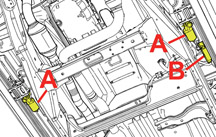
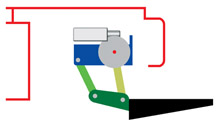
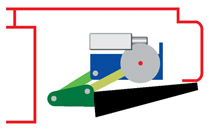






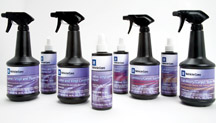
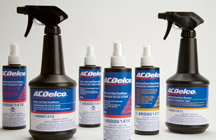



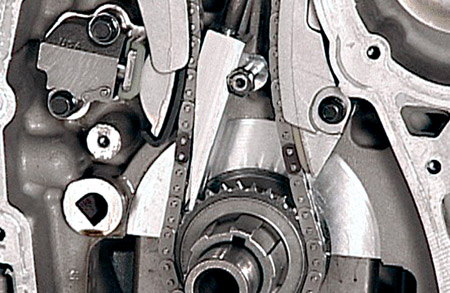
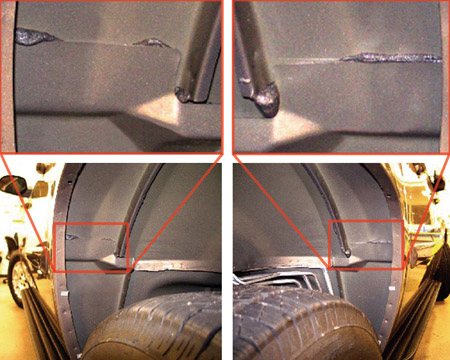
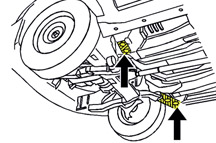
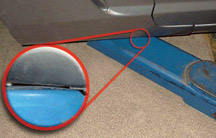
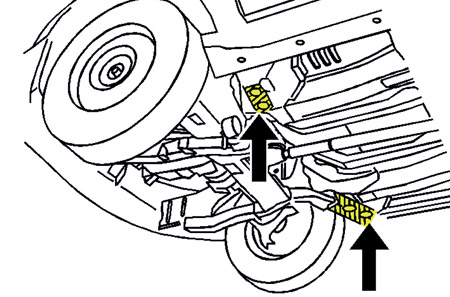
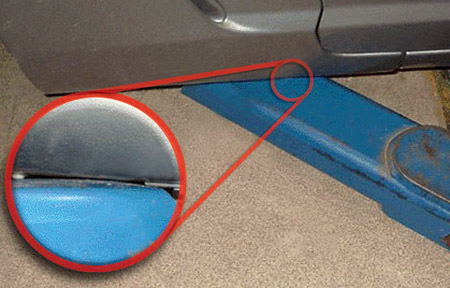

 Truck Issues — Fix It Right the
First Time
Truck Issues — Fix It Right the
First Time  Powertrain Issues — Fix It Right the
First Time
Powertrain Issues — Fix It Right the
First Time 